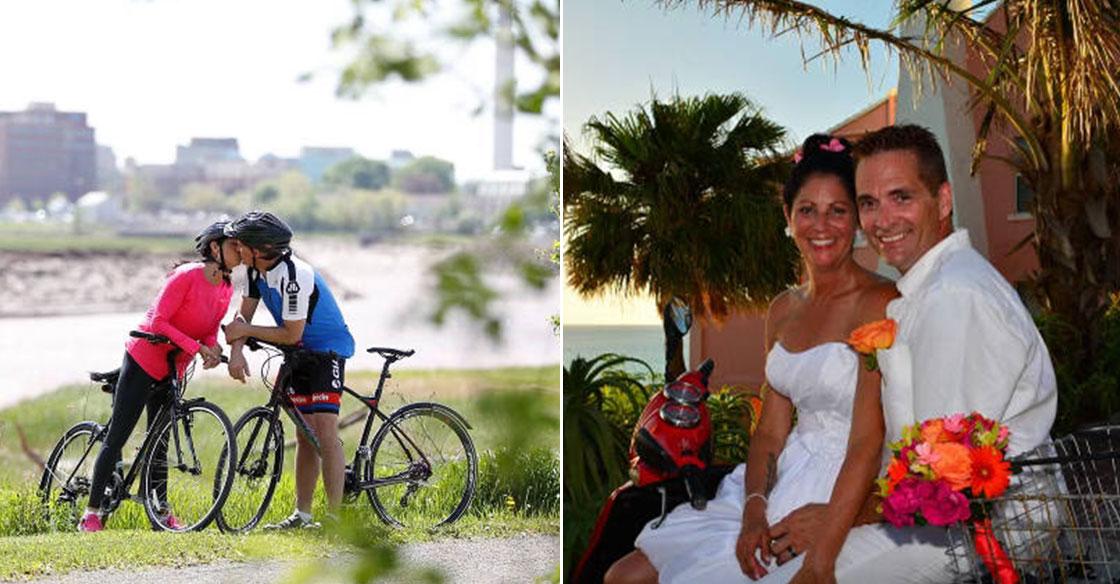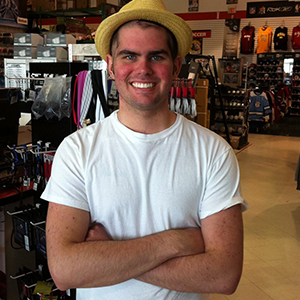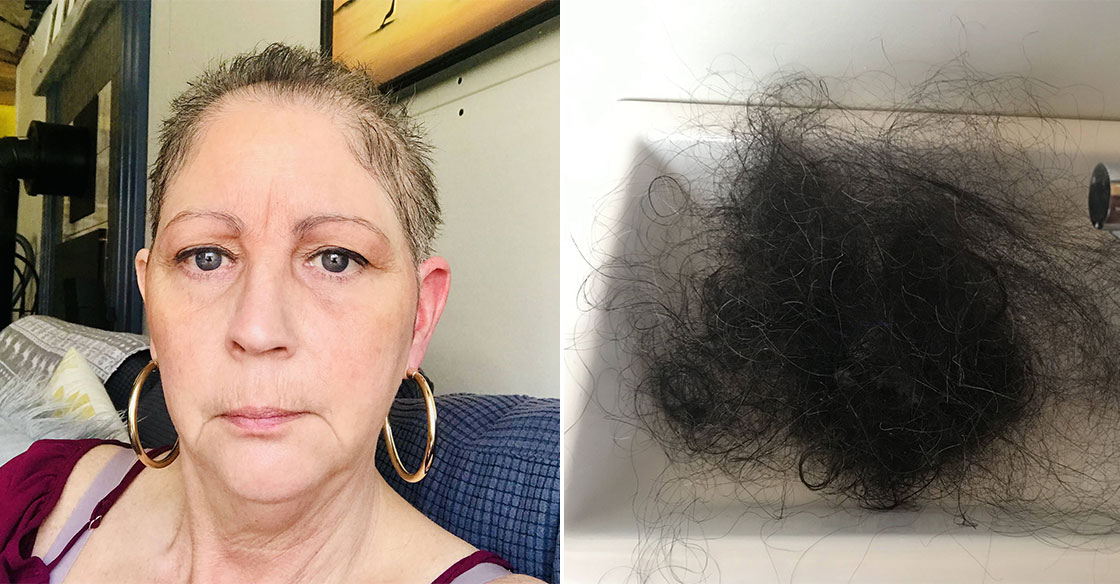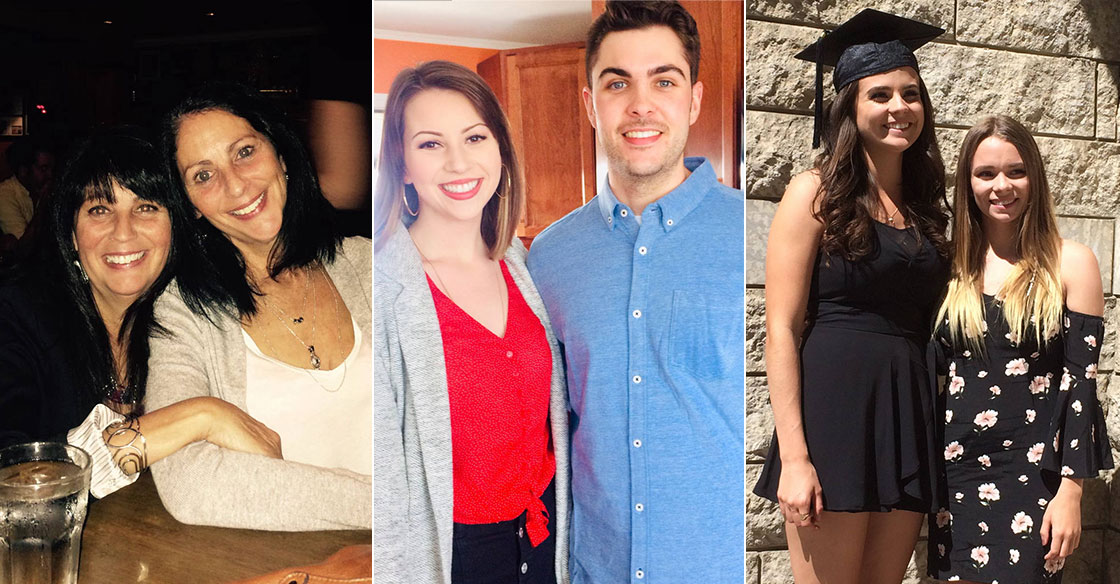
Pictured: Jennifer Gouchie-Terris with Darren, her husband and "biggest supporter".
Late last year, I began freelancing as a custom content writer for SaltWire Network. One of my first assignments in early 2022 was to write an article to publicly launch the $100-million We Are capital fundraising campaign at the QEII Health Sciences Centre in Halifax.
I felt honored to be trusted to do it, not only because of the enormity of the campaign, but because of what the finished product will mean for the delivery of healthcare services in our region. What struck me most about my interview with the volunteer (yes, volunteer), campaign engagement chair and two-time cancer survivor, Sherry Porter, was the fact that she said at some point, everyone in Nova Scotia and beyond would require the services of the QEII, whether it be for a broken bone, cardiac surgery, specialized cancer care or something in between.

My son had received radiation treatments for a brain tumour at the cancer centre which although didn’t change the overall outcome of his disease, did give us some more precious time with him and for that I was and am forever grateful.
But little did I know, that
a short time later, I too
would require its services.
In late January, I began having heavy vaginal bleeding which for a 56-year-old post-menopausal woman was obviously concerning. At first, I attributed it to having recently taken a break from the hormone replacement therapy I had begun several years earlier as a means of treating debilitating hot flashes.
When my condition worsened, I went to the emergency department at South Shore Regional Hospital in Bridgewater to get some answers. My husband and I had moved to Nova Scotia from New Brunswick last August to be closer to our children so I was without a family physician. After a 12-hour wait, I was finally seen by the attending physician who after performing a bedside ultrasound, saw cause for alarm. I was sent home and told to come back early the following morning for a more precise internal and external ultrasound which showed a cantaloupe-sized mass in my pelvis.
I met later that day with the same emergency room physician who broke the news and had the foresight to not only order specialized bloodwork to check for cancer markers in anticipation of what may come, but a same day CT scan to rule out any other masses in my abdomen and chest. They were clear.
A lot happened very quickly over the next few days. I was booked for an MRI at Valley Regional Hospital in Kentville and that same day, received a call from a gynecologist at the Bridgewater & Area Family Health Centre I had been referred to by the same emergency room physician who told me she wanted to make sure I didn’t slip through the cracks because I didn’t have a family doctor to follow me. She also shared that the cancer markers were indeed elevated and referred me to a gynecological oncologist at the QEII.
It took a couple of weeks to get the appointment during which time there were several more trips back to the emergency department including a harrowing one-hour ambulance drive during one of the worst ice storms ever to hit Nova Scotia.
By the time my appointment with the specialist rolled around, I was in severe pain and looked as if I was six months pregnant. The mass was interfering with my lymphatic system and I was retaining an absurd amount of fluid.
She prepared me for what was to come which was a complete open hysterectomy in four to six weeks. Obviously, I was concerned about the wait time, but also understood the backlog of surgical procedures due to COVID.
Two weeks before my scheduled surgery date, my condition worsened and I was booked for emergency surgery. I was admitted to the hospital and although I didn’t make it into surgery the first day, I did by noon the next day.
As I lay in my hospital bed prepped and ready for surgery, I had a visitor. It was an individual from Ostomy Halifax telling me that she was there to do markings for what would likely be a colostomy or ileostomy during surgery. I was horrified, but like everything else, I just had to push back the fear and hope that it would be temporary or perhaps not at all.
A short time later, a nurse appeared and said the OR was ready for me. It was surreal as a I was rolled down to the operating suites. I was surprisingly calm and had the images of my boys' faces in my mind as I drifted off to sleep.
I woke up in recovery almost five hours later, confused from medications and hooked up to a plethora of IV lines and monitors. The first thing I did was reach for my belly and was quickly told “no colostomy.’’ However, I had lost more than four and a half quarts of blood during the procedure (half my blood supply) and had no blood pressure on the cuff at one point which resulted in multiple blood transfusions and blood products.
It was obviously a very complicated surgery and one I may not have survived had it not been for my healthcare team in the OR that day. They are truly the best of the best. I spent the night in a step-down unit where I could receive more individual care, but couldn’t sleep despite everything my body had been through.
The drugs made me extremely anxious and I had a panic attack as I watched my hands and face begin to swell from the displacement of fluid in my body. I was finally taken back to my room where my husband was waiting along with three other women going through similar experiences. We all writhed in pain with every slight movement and faced the same uncertain future. I took pride in how strong we are as women.
The next couple of days were filled with ungodly surgical pain, drug-induced hallucinations, and more blood transfusions. Incredibly, I was released three days later with countless staples that traveled from my breastbone down to my pelvic area.
Waiting for the pathology results was the hardest part. Every possible scenario goes through your head and sleep eluded me for weeks as my OCD kicked into high gear. It was debilitating at times and as much as one tries to remain positive, the reality of the situation sometimes simply makes that impossible.
Those results came six weeks later. The verdict- stage 2 ovarian cancer. The most common type of ovarian cancer in women which is sometimes genetic. I will be tested later this month and if I do have the gene, it could pose potential consequences for my identical twin sister, surviving son and nieces and nephews.
A mere two days after receiving the pathology results, I had my first chemotherapy treatment. It was the first of six - one every three weeks if all goes well. It’s a 12-hour process for the two drugs involved, one of which is the same as my son received during treatment for his brain tumour.
I’ve had some side-effects, but I’m looking forward to getting through the next 18-weeks and putting this behind me. There’s no guarantees that the cancer won’t return, but my prognosis is good under the circumstances. It could have been a lot worse and I am acutely aware of that.

The purpose of this is four-fold – to tell a story as a writer, to create awareness of ovarian cancer, to express my sincere gratitude for the tremendous healthcare I have and will most certainly continue to receive, and to strongly encourage others to support the We Are capital campaign at the QEII. But it’s also timely in that May 8 is World Ovarian Cancer Day.
I’d be lying if I said things have always gone smoothly. There have definitely been times when I have felt disappointed, frustrated, scared and even angry over the past few months. Our healthcare system is unquestionably struggling in many ways and although I can only speak from my own personal experience, I think we all need to count our blessings and not take what we have for granted despite its obvious short-comings.
COVID has wreaked havoc over the past couple of years and many people continue to wait for life-saving surgeries, treatments and services as a result which is heart-breaking. Maybe I’m one of the lucky ones.

{"preview_thumbnail":"/sites/default/files/styles/video_embed_wysiwyg_preview/public/video_thumbnails/1SkNmVbM2k8.jpg?itok=gUaEF7NK","video_url":"https://www.youtube.com/watch?v=1SkNmVbM2k8&t=23s","settings":{"responsive":1,"width":"854","height":"480","autoplay":0},"settings_summary":["Embedded Video (Responsive)."]}